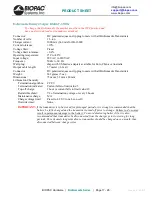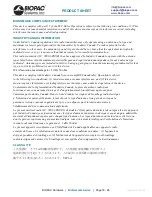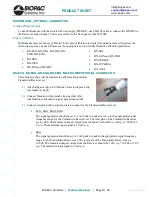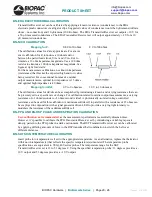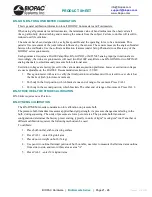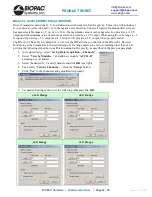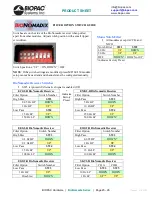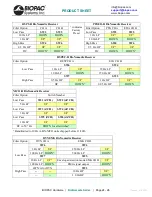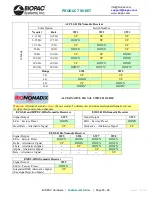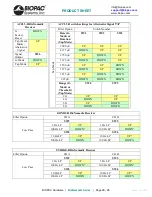
PRODUCT SHEET
info@biopac.com
www.biopac.com
BIOPAC Hardware |
BioNomadix Series
| Page 12 - 26
Updated: 8.18.2020
BIONOMADIX OPERATIONAL RANGE AND TRANSMISSION CHARACTERISTICS
The BioNomadix system is a very low power transmission system designed for physiological measurements in a
laboratory setting. In this explanation, a BioNomadix transmitter is referred to as series BN-Tx and a BioNomadix
receiver as series BN-Rx.
Primary design objectives for the BioNomadix system:
1)
BN-Tx and BN-Rx units to emulate operation, as if
“attached by cable”
2)
Transmission effects not to disturb physiological source
3)
Classification subject to class B digital device pursuant to
FCC part 15
4)
Long BN-Tx operational time, after recharge
5)
Quick recharge time, under one hour
6)
Bn-Tx units to be as lightweight, rugged
and small as possible
7)
Minimal user setup required, simply
power up and start collecting data
BioNomadix Operational Range and Characteristics
A primary objective of the BioNomadix System is that it cannot behave in a fashion that would permit any arbitrary
time delay between transmitter and receiver. This objective is critical for the BioNomadix System because it insures
robust time synchronization between any BN-Tx units and external hardware. Because of the requirement to “behave
as though a cable connects BN-Tx and BN-Rx”, the BioNomadix System required a special and optimized protocol to
insure the best possible attempts to send data, within a limited (10 sample) time frame. If data could not be sent within
this time frame, then data would be replaced with the last data value sent for a short time period (for up to about one
second) thereafter until finally, assuming a reconnect was not possible, the transmitted data (not received) will be
identified as null (zero) values.
The BioNomadix System operational transmission range is 10 meters line-of-sight, typical, in standard laboratory
environments. Operational range can vary depending on factors such as presence of electromagnetic interference,
multi-path, or radio frequency signal blocking. In the event of a communications failure, BioNomadix Tx and Rx
modules will attempt to re-establish communications until such communications can be re-established.
BioNomadix Tx are purposely kept at very low power so as not to disrupt the sensitive biophysical parameter
measured, to enhance battery life, and to satisfy the relevant FCC regulations. If a BN-Tx and BN-Rx pair is used
outside of the laboratory (without the benefit of multi-path) and if the BN-Tx is line-of-sight blocked from the BN-
Rx, then communication dropouts are increasingly likely. A functional solution is to keep the BN-Tx and BN-Rx in
constant line-of-site view.
BioNomadix signal performance is best with “line-of-sight” connection from transmitter unit to receiver unit. Signal
dropouts happen when a conductive surface (metal or human body) is placed between the transmitter and receiver
unit. If this happens, and there are no other radio frequency reflective surfaces in the room, then the radio waves can’t
get from transmitter unit to receiver. This phenomenon is referred to as “body-blocking.” The solution is to place the
transmitter and receiver units closer together and to eliminate potential for body-blocking.
Case studies
Case 1: Multiple people wearing BioNomadix Tx units are walking around in a room and the BN-Rx units are placed
in a nearby room. Periodically, when body blocking occurs, short signal dropouts are noted.
Solution 1
:
Place the BN-Rx units, with MP160/150, directly above the subjects in the room. This will greatly
minimize the potential for body-blocking, from Tx unit to Rx unit, as subjects move around.
Case 2: Multiple people wearing BioNomadix Tx units are sitting in a room with a central table. The BioNomadix Rx
units are placed in a nearby room. Periodically, when body blocking occurs, short signal dropouts are noted.
Solution 2
:
Mount the receiver (BN-Rx) units, with MP160/150, underneath the center of the table, around
which the subjects are sitting. Mount a platform to the underside of the table and rest the receiver with
MP160/150 on it. This situation places the receivers just one or two meters away from the transmitters
attached to the subjects.

















